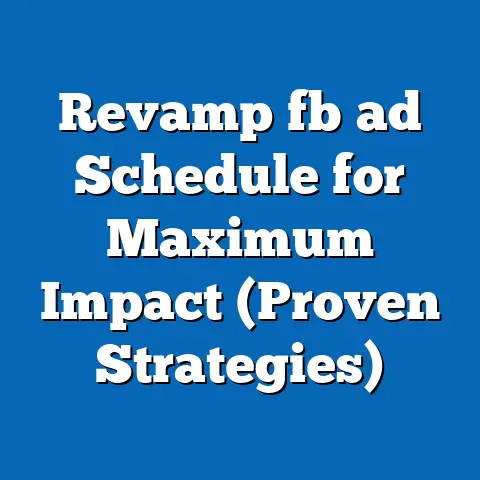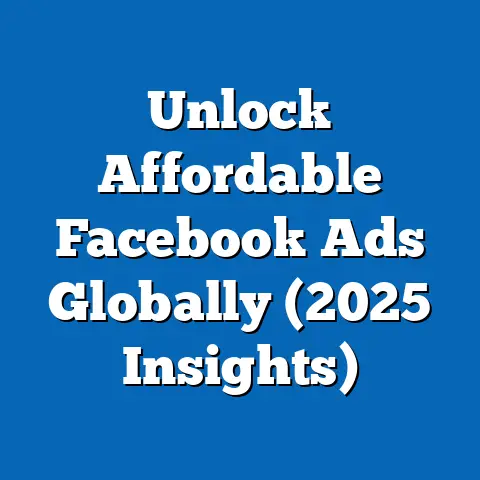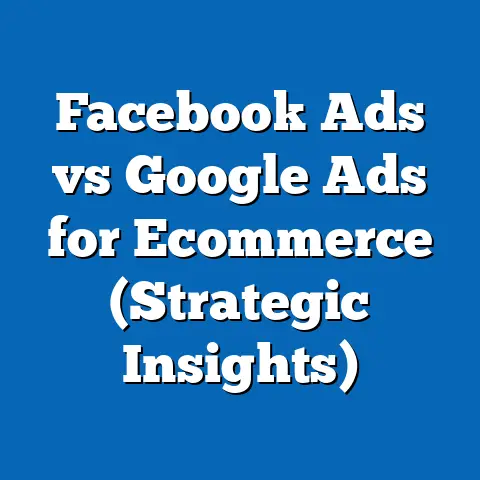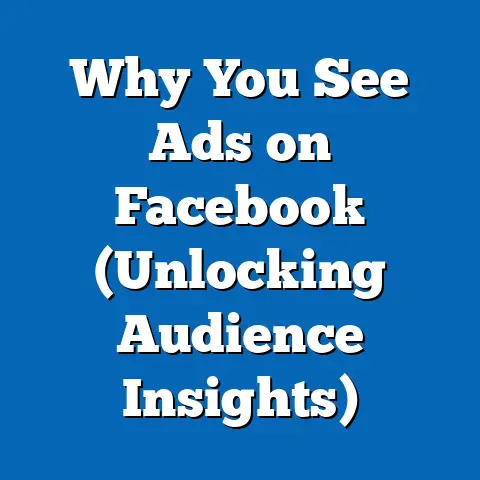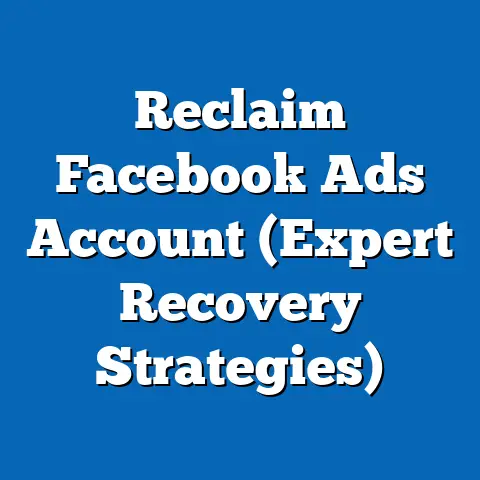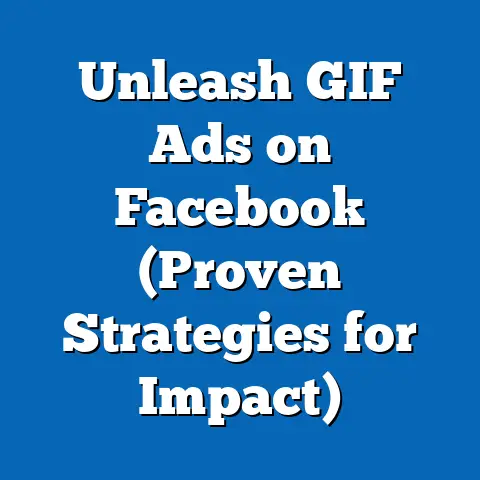Revive Facebook Ad’s Performance (Proven Strategies)
In the ever-evolving world of digital advertising, Facebook remains a powerhouse. Over the years, I’ve watched it adapt to the whirlwind of changes in user behavior, navigate countless algorithm updates, and weather the intense competition of the advertising market. It’s a dynamic landscape, and frankly, it can be a real challenge for advertisers to keep up.
Today, we face hurdles that didn’t even exist a few years ago. Ad fatigue sets in faster, competition is fiercer, and consumer preferences are more fickle than ever. You might be seeing your engagement rates dip, your costs rise, and your overall ad performance plateau or even decline. I’ve been there, staring at the screen, wondering what I could possibly do to turn things around.
That’s why I’m writing this – to share proven strategies that I’ve seen work, strategies that have helped me and countless others breathe new life into Facebook ad campaigns. It’s about moving beyond the basic “boost post” mentality and diving into the techniques that truly drive results. This isn’t just about throwing money at the problem; it’s about working smarter, not harder, and understanding how to leverage Facebook’s powerful tools to your advantage. Let’s get started!
Understanding the Current State of Facebook Ads
Before we dive into the solutions, let’s take a hard look at where Facebook advertising stands today. The landscape has shifted significantly, and understanding the current environment is crucial for any advertiser aiming to succeed.
According to recent industry reports, the average click-through rate (CTR) for Facebook ads hovers around 0.9%, with variations across different industries. That means less than 1% of people who see your ad are actually clicking on it. Cost per click (CPC) is also on the rise, with averages ranging from $0.50 to $2.00, depending on your targeting and industry. These numbers highlight the increasing competition for ad space and the need for more compelling and targeted campaigns.
One of the biggest factors affecting ad performance is Facebook’s ever-changing algorithm. These updates, often aimed at improving user experience and combating misinformation, can have a significant impact on ad visibility and reach. I remember one particular algorithm update that completely decimated the reach of one of my campaigns. It was a wake-up call to the importance of staying informed and adapting quickly.
So, what are the typical reasons for declining performance? In my experience, they often boil down to a few key issues:
- Audience Saturation: Showing the same ads to the same audience repeatedly leads to ad fatigue and decreased engagement.
- Irrelevant Content: Ads that don’t resonate with the target audience, either in terms of message or creative, are likely to be ignored.
- Lack of Creative Experimentation: Sticking to the same old ad formats and visuals can quickly become stale and ineffective.
- Poor Targeting: Broad or inaccurate targeting can result in wasted ad spend and low conversion rates.
- Ignoring Data: Failing to analyze ad performance data and make adjustments accordingly is a surefire way to see your results decline.
Takeaway: Understanding the current challenges and common pitfalls in Facebook advertising is the first step towards reviving your ad performance. Pay attention to industry trends, algorithm updates, and the reasons behind declining results to inform your strategy.
Proven Strategies to Revive Facebook Ad Performance
Now, let’s get to the meat of the matter: the proven strategies that can help you revitalize your Facebook ad campaigns. I’ve broken these down into key areas, each with actionable steps you can implement right away.
Audience Segmentation and Targeting
One of the most powerful tools in your Facebook advertising arsenal is the ability to target specific audiences. But simply selecting a few broad interests isn’t enough anymore. You need to get granular and really understand who you’re trying to reach.
- Custom Audiences: These allow you to target people who have already interacted with your business, either online or offline. You can upload customer lists, target website visitors, or engage with users who have interacted with your Facebook page or ads. I once created a custom audience of people who had downloaded a free ebook from my website. The results were astounding – the conversion rate for ads targeting this audience was significantly higher than for my general audience.
- Lookalike Audiences: This feature lets you create new audiences that are similar to your existing customers or website visitors. Facebook analyzes the characteristics of your source audience and finds users with similar demographics, interests, and behaviors. I’ve found that lookalike audiences based on high-value customers tend to perform exceptionally well.
- Interest-Based Targeting: This involves targeting users based on their expressed interests, hobbies, and activities. While this can be effective, it’s important to be specific and avoid overly broad categories. Instead of targeting “marketing,” try targeting “email marketing automation” or “content marketing strategy.”
- Retargeting Strategies: Don’t let potential customers slip through the cracks. Retargeting allows you to re-engage users who have previously interacted with your brand but haven’t yet made a purchase or completed a desired action. You can show them ads for the products they viewed on your website, remind them of items they left in their shopping cart, or offer them a special discount to incentivize conversion.
Takeaway: Effective audience segmentation and targeting are crucial for reaching the right people with the right message. Use Custom Audiences, Lookalike Audiences, and interest-based targeting to refine your reach and improve your ad performance. Don’t forget the power of retargeting to re-engage potential customers.
Creative Refresh and Content Innovation
In the fast-paced world of social media, ad fatigue is a real threat. If you’re showing the same ads to the same audience for too long, they’ll start to tune them out, and your performance will suffer. That’s why it’s essential to regularly refresh your ad creatives and experiment with new content formats.
- Combat Ad Fatigue: I recommend updating your ad creatives at least every two to four weeks, depending on your audience size and budget. This could involve changing the visuals, updating the copy, or trying a completely new angle.
- Resonate with Audiences: Pay attention to the types of content that resonate well with your target audience. Videos are often highly engaging, especially short, attention-grabbing clips. User-generated content (UGC), such as customer testimonials or product reviews, can also be very effective in building trust and credibility. Carousel ads allow you to showcase multiple products or features in a single ad unit, while collection ads offer a visually immersive shopping experience.
- A/B Testing: Don’t just guess what works best – test it! A/B testing involves creating multiple versions of your ad with different visuals, copy, and formats, and then running them simultaneously to see which performs best. I use A/B testing to optimize everything from headlines and body copy to call-to-action buttons and image selection.
Takeaway: Keep your ad creatives fresh and engaging by regularly updating your visuals, copy, and formats. Experiment with different content types, such as videos, UGC, and carousel ads. Use A/B testing to optimize your ads and discover what resonates best with your target audience.
Leveraging Facebook’s Ad Features
Facebook is constantly rolling out new ad features and tools designed to help advertisers improve their performance. It’s important to stay up-to-date on these developments and learn how to leverage them to your advantage.
- Dynamic Ads: These ads automatically promote products to people who have expressed interest on your website, in your app, or elsewhere on the internet. They’re a great way to retarget potential customers with personalized product recommendations.
- Collection Ads: These ads offer a visually immersive shopping experience by combining a hero video or image with a selection of related products. They’re particularly effective for showcasing a range of products and driving sales.
- Instant Experience: Formerly known as Canvas ads, Instant Experiences are full-screen, mobile-optimized ads that load instantly and provide an engaging, interactive experience. They’re a great way to tell your brand story, showcase your products, or drive conversions.
- Campaign Budget Optimization (CBO): This feature allows Facebook to automatically distribute your campaign budget across your ad sets, based on which ones are performing best. This can help you maximize your ad reach and efficiency.
- Automatic Placement: This feature allows Facebook to automatically place your ads on the platforms and placements where they’re most likely to perform well. This can save you time and effort and help you reach a wider audience.
Takeaway: Take advantage of Facebook’s powerful ad features, such as Dynamic Ads, Collection Ads, and Instant Experiences, to enhance your ad performance. Utilize automated features like Campaign Budget Optimization and Automatic Placement to maximize your ad reach and efficiency.
Analyzing Data and Metrics
Data-driven decision-making is essential for any successful Facebook ad strategy. You need to track your ad performance, analyze the data, and make adjustments accordingly.
-
Key Performance Metrics: There are several key performance metrics you should be monitoring, including:
- Click-Through Rate (CTR): This measures the percentage of people who see your ad and click on it. A higher CTR indicates that your ad is relevant and engaging.
- Cost Per Click (CPC): This measures the average cost you pay for each click on your ad. A lower CPC indicates that your ad is efficient and cost-effective.
- Cost Per Acquisition (CPA): This measures the average cost you pay for each conversion (e.g., a purchase, a lead, a sign-up). A lower CPA indicates that your ad is effective at driving conversions.
- Return on Ad Spend (ROAS): This measures the revenue you generate for every dollar you spend on advertising. A higher ROAS indicates that your ad is profitable.
- Facebook Analytics: Facebook provides a wealth of data and analytics tools to help you track your ad performance. You can use Facebook Analytics to monitor your key performance metrics, identify trends, and understand how your ads are performing across different platforms and placements.
- Third-Party Tools: There are also a number of third-party tools that can help you analyze your Facebook ad data and derive actionable insights. These tools often provide more advanced reporting and analytics features than Facebook’s native tools.
Key Performance Metrics: There are several key performance metrics you should be monitoring, including:
- Click-Through Rate (CTR): This measures the percentage of people who see your ad and click on it. A higher CTR indicates that your ad is relevant and engaging.
- Cost Per Click (CPC): This measures the average cost you pay for each click on your ad. A lower CPC indicates that your ad is efficient and cost-effective.
- Cost Per Acquisition (CPA): This measures the average cost you pay for each conversion (e.g., a purchase, a lead, a sign-up). A lower CPA indicates that your ad is effective at driving conversions.
- Return on Ad Spend (ROAS): This measures the revenue you generate for every dollar you spend on advertising. A higher ROAS indicates that your ad is profitable.
- Facebook Analytics: Facebook provides a wealth of data and analytics tools to help you track your ad performance. You can use Facebook Analytics to monitor your key performance metrics, identify trends, and understand how your ads are performing across different platforms and placements.
- Third-Party Tools: There are also a number of third-party tools that can help you analyze your Facebook ad data and derive actionable insights. These tools often provide more advanced reporting and analytics features than Facebook’s native tools.
Takeaway: Data is your best friend in the world of Facebook advertising. Track your key performance metrics, analyze the data, and make adjustments to your strategy accordingly. Use Facebook Analytics and third-party tools to derive actionable insights and optimize your campaigns for maximum performance.
Conclusion
Reviving your Facebook ad performance requires a multifaceted approach that combines strategic audience segmentation, creative innovation, leveraging Facebook’s ad features, and data-driven decision-making. It’s not a one-time fix, but rather an ongoing process of experimentation, optimization, and adaptation.
Remember, the digital advertising landscape is constantly evolving. What works today might not work tomorrow. That’s why it’s so important to stay informed, stay curious, and never stop experimenting.
By implementing these proven strategies and maintaining a commitment to excellence, you can revitalize your Facebook ad campaigns and achieve remarkable improvements in your results. So, go out there, experiment, and see what you can achieve! The potential for success is there – you just need to unlock it.

